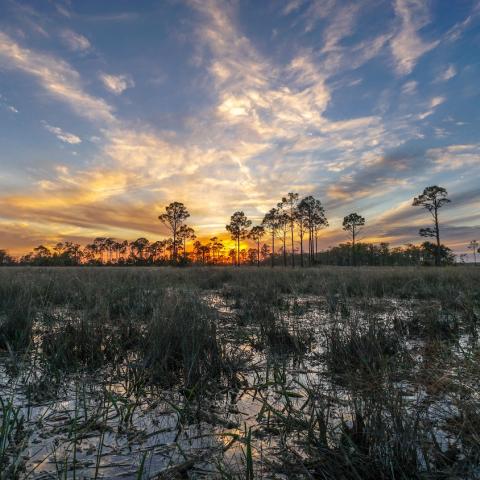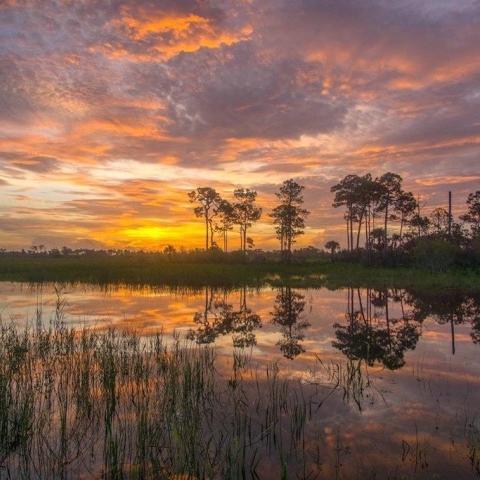Two air tour contracts have been signed for overflights of Big Cypress National Preserve in Florida, and they outline exactly where the flights can go, at what altitude, the types of aircraft, and the number of flights per year.
The agreements with Wings and Miami Seaplane Tours, Inc., reduce the total number of overflights per year from nearly 1,300 allowed under interim rules to 972. They were developed in a collaborative effort among Federal Aviation Administration, the preserve, the air tour operators, the National Park Service Southeast Region, and the Natural Sounds and Night Skies Division of the Park Service's Natural Resource Stewardship and Science directorate.
Wings has been providing air tours over the preserve for many years under interim operating authority from FAA. The new agreement authorizes up to 720 tours a year. The agreement with Miami Seaplane Tours, Inc., a new operator over the preserve, authorizes up to 252 tours a year. The agreements will be fully implemented when the FAA updates the operating specifications for each operator within 90 days of Dec. 21, 2015, the date of final signatures.
As an existing operator, Wings will continue to fly tours under interim operating authority until the update of the operating specifications. After that, Wings will operate according to the terms of the agreement. Because Miami Seaplanes is a new tour operator over the preserve, it may begin tours once the company's operating specifications have been updated.
According to the Park Service, the tour routes were laid out in such a way to "minimize possible negative effects on wildlife, visitor experience, and wilderness in the preserve. Routes were intentionally drawn to avoid high visitor-use areas such as the Oasis Visitor Center and the H.P. Williams Wayside as well as eligible and proposed wilderness areas in the preserve to protect wilderness character."
The agreements allow the flights to go as low as 500 feet over the preserve, which park officials believe is "considered appropriate because it does not interfere with preserve management objectives and because FAA regulations allow it."
Copies of the signed agreements, along with a list of frequently asked questions about air tours and the development of the agreements, are available at this site.
Nationwide, commercial air tour companies have interim operating authority from FAA to conduct about 289,000 commercial air tours over national parks each year. The FAA Modernization and Reform Act of 2012 gave the FAA and NPS authority to enter into air tour management agreements with commercial operators. Such agreements manage commercial air tours over national park units to protect park resources and visitor use without compromising aviation safety or the nation's air traffic control system.



 Support Essential Coverage of Essential Places
Support Essential Coverage of Essential Places







Comments
I find the 500 foot altitude interesting. In other parks, the minimum is 1000 feet above any terrain within five miles. In addtition, bird strikes are more common at altitudes of about 800 feet or less. T'would be interesting to see the reasoning behind this.